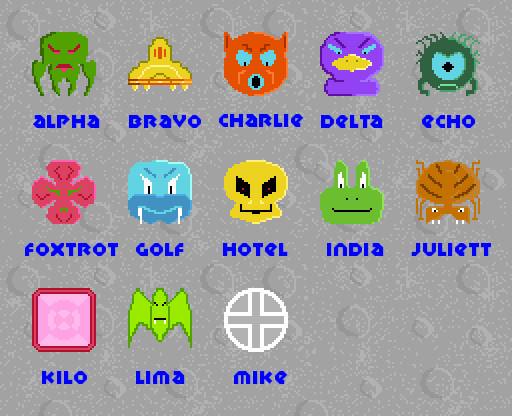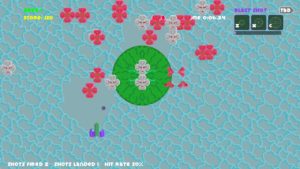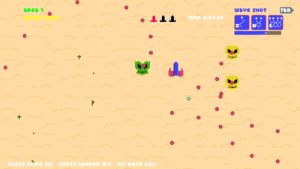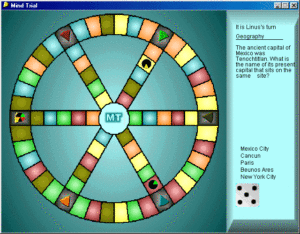This month I continued to work on SDL Shooter, which is a space shooter written in SDL and C. This game started as a presentation demo for the December 2019 Knoxville Game Design meeting. The project source code is available on my GitHub account. I’m hoping to release it on more platforms when it gets to a point where I feel that it is complete. Right now I’m just having fun adding new types of enemies.
- Foxtrot – Moves a few units either vertically or horizontally, pauses, and then moves in a new direction.
- Golf – Snake type enemy that has a random number of tail links. Each link of the tail must be damaged before the head can be damaged. Moves in a sine wave at variable rates.
- Hotel – Stationary enemy that constantly fires projectiles in a radial fashion.
- India – Large enemy that explodes into four smaller enemies when damaged. When the four smaller enemies are damaged they explode into eight even smaller enemies. I need to make the explosion angles random, instead of the standard 90/180/270 and 45/90,135, etc angles.
- Juliett – Hopper enemy that jumps in a parabola one to three units horizontally. One issue is two of these enemies can jump to the same spot and overlap. This could be solved by adding a target location variable for each enemy, and determine if another enemy has claimed that spot before jumping there. I would also like to have the enemy attack the player’s ship in some way. Either charge the player’s ship when it is aligned vertically, or shoot webs at the player’s ship to slow it down like in Zekkou no Tomodachi.
- Kilo – A random number is displayed on top, and the player must shoot the correct binary sequence to defeat this enemy. Added the current “attack value” below the target value, which makes completing the binary sequence a little easier. The enemy has between 3 and 5 bits, so the maximum value for a 3 bit enemy is 7 and the maximum for a 5 bit enemy is 31.
- Lima – A bat type enemy that starts sleeping, and then awakes and chases the player when the ship is near. The enemy is only vulnerable when it is not sleeping. The amount of time that it takes for the enemy to wake up is random. The second level enemy moves faster and takes more damage to defeat.
- Mike – Color orb enemy. Three small orbs revolve around the center, which are either red, green, or blue. The player must shoot the correct revolving orb to match the center. If the center is yellow, cyan, or magenta, then it takes the correct two orb combination to defeat the enemy (such as cyan = green and blue). Shooting an incorrect orb will make the orbs revolve faster for a short period of time and the enemy will shoot at the player’s ship.

I checked my Microsoft developer dashboard today to see if the XBox One Creators Program was still running. I noticed that Kitty’s Adventure has now passed 50,000 acquisitions between XBox One and Windows Store. It is by far the most popular game that I’ve released to this day.

Also this month, we had a great turnout for the online Knoxville Game Design Meeting. This month’s topic was Java Game Development.
I spent some time updating my two college work pages for Georgia Tech and the University of Tennessee. Links to those two pages are now displayed on the main menu on my site under Education. I also found more of my old websites, which I uploaded and linked on my wiki page under Historical Pages. I uploaded the source code for some projects that were missing, such as the Predator database projects.
















